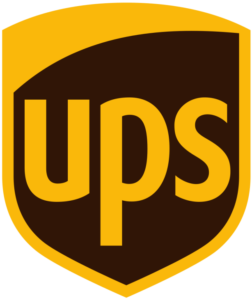Claves para elegir el inmueble
ideal para tu organización

Elegir el lugar donde funcionará una organización es una de las tareas más complejas e importantes del camino hacia el emprendimiento, es por eso que resulta fundamental analizar a fondo factores que resultarán clave en el momento de tomar esta decisión.
Si estás poniendo en marcha el proyecto de crear empresa, si el negocio que has tenido ya durante algún tiempo se está expandiendo o si finalmente tienes el músculo financiero necesario para invertir en tu empresa, presta atención a las siguientes claves que te ayudarán a seleccionar el inmueble perfecto. Ten en cuenta que los bienes raíces son una inversión bastante segura, que además de representar el lugar donde funcionará tu negocio, pueden convertirse en un activo bastante rentable.
- Ubicación
La ubicación es el principal factor que se debe tener en cuenta en el momento de establecer un negocio porque esta definirá su visibilidad. El comportamiento del mercado puede demostrarte que no es lo mismo un local comercial que un local que se dedique a prestar servicios, así como también es diferente pensar en la ubicación de un lugar que está dirigido a empresas que en la de uno dirigido a personas particulares. Por otra parte, el estilo de producto o servicio que ofrezcas te puede indicar también dónde puede ser un posicionamiento efectivo, por ejemplo: Si se trata de una tienda de ropa de lujo, el negocio debería estar ubicado en las mejores calles de la ciudad, si es posible con gran paso de turistas y personas con un alto poder adquisitivo; a diferencia de si se trata de un negocio de ropa de segunda mano y de precios más accesibles, esto interesará a ciudadanos con menos recursos económicos y debería posicionarse en una zona donde haya gran paso de los mismos como un centro comercial.
- Infraestructura
Esta determinará qué tanto puedes jugar con el espacio al momento de remodelar o redecorar. Lo ideal sería evaluar las instalaciones con un inspector o un arquitecto puesto que probablemente tengas en mente remover una pared o un pilar, cosa que no podrías hacer si resulta que es una pared soporte para el edificio. Con el fin de poder llevar a cabo el proyecto de remodelación que puedas tener en mente, y asegurar que tu inversión proyectada no esté colmada de gastos imprevistos, la asesoría de un experto resulta muy acertada. Mientras menos obstáculos haya en la parte interior del inmueble, más oportunidades tendrás para dar rienda suelta a la imaginación.
- Accesibilidad
¿El lugar es fácil de encontrar? ¿Tiene un parqueadero cercano? ¿Hay paradas de autobuses o metro en sus alrededores? Todos estos aspectos también son indispensables. Recomendación: Si tu negocio no tiene un paso de peatones cerca es posible solicitar a la alcaldía el permiso para ubicar uno frente a tu local o relativamente cerca. Esto atraerá más tráfico y entonces será más probable que las personas vayan a conocer tu oferta comercial.
- Permisos
La última clave, pero no menos importante, es revisar si el inmueble cumple con los requisitos para adquirir las licencias para vender alimentos o bebidas alcohólicas (si es el caso), los horarios de funcionamiento permitidos y la capacidad máxima establecida o cualquier otro particular propio de tu establecimiento.
Aunque la ubicación y las características de la propiedad donde será establecido un negocio resultan piezas claves en la búsqueda del éxito, lo cierto es que son muchos los elementos necesarios para garantizar la productividad y el sostenimiento de cualquier tipo de organización. Es por eso que en Atlantis University hemos diseñado una Maestría en Administración de Empresas ideal para formar líderes excepcionales y ejecutivos de alto nivel internacional, con competencias específicas, capaces de ejecutar las habilidades gerenciales necesarias para ser efectivos en un entorno global de evolución continua.
Haz click aquí para comunicarte con un representante Atlantis. Recuerda preguntar si eres elegible para una de nuestras becas.

















